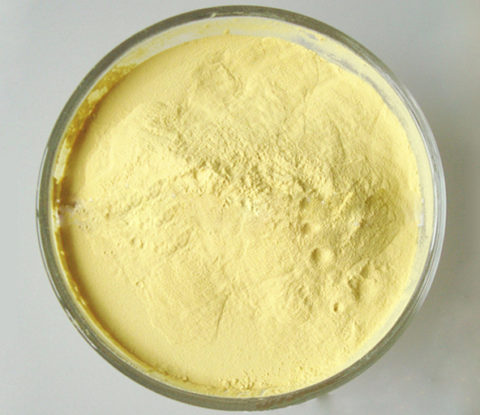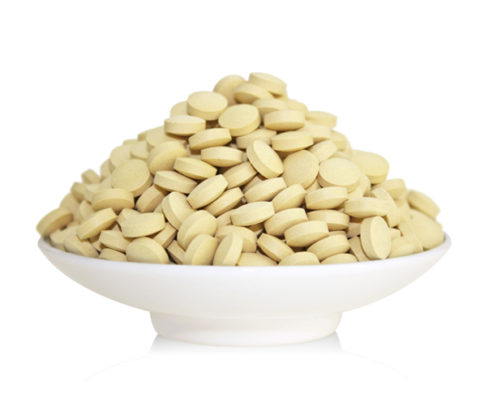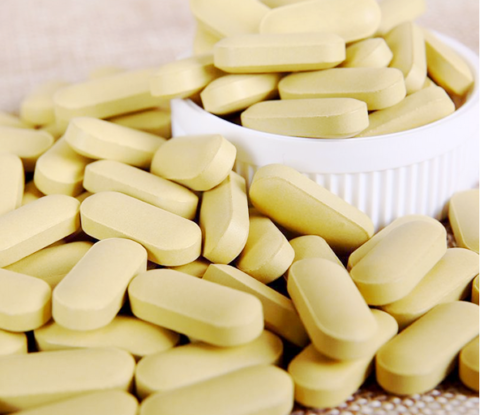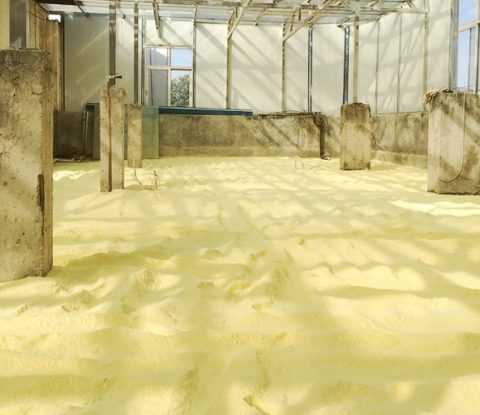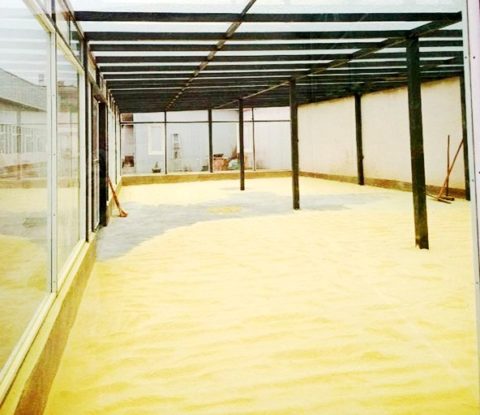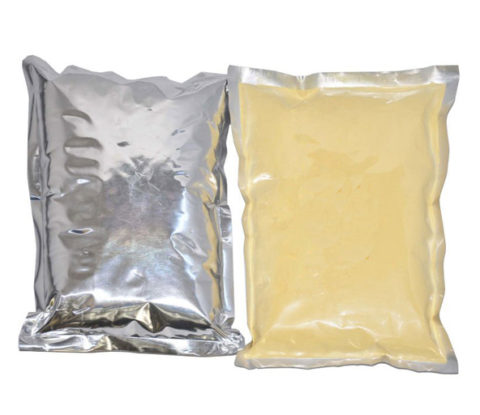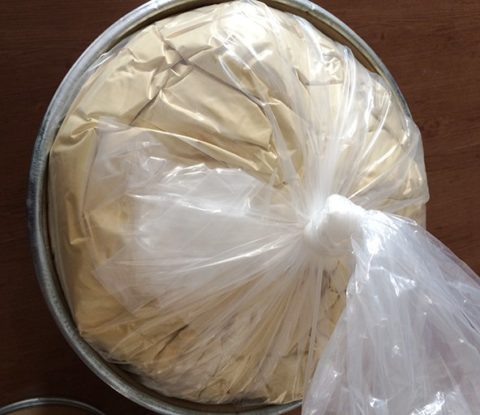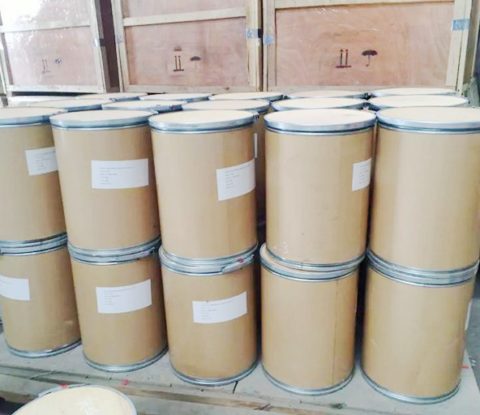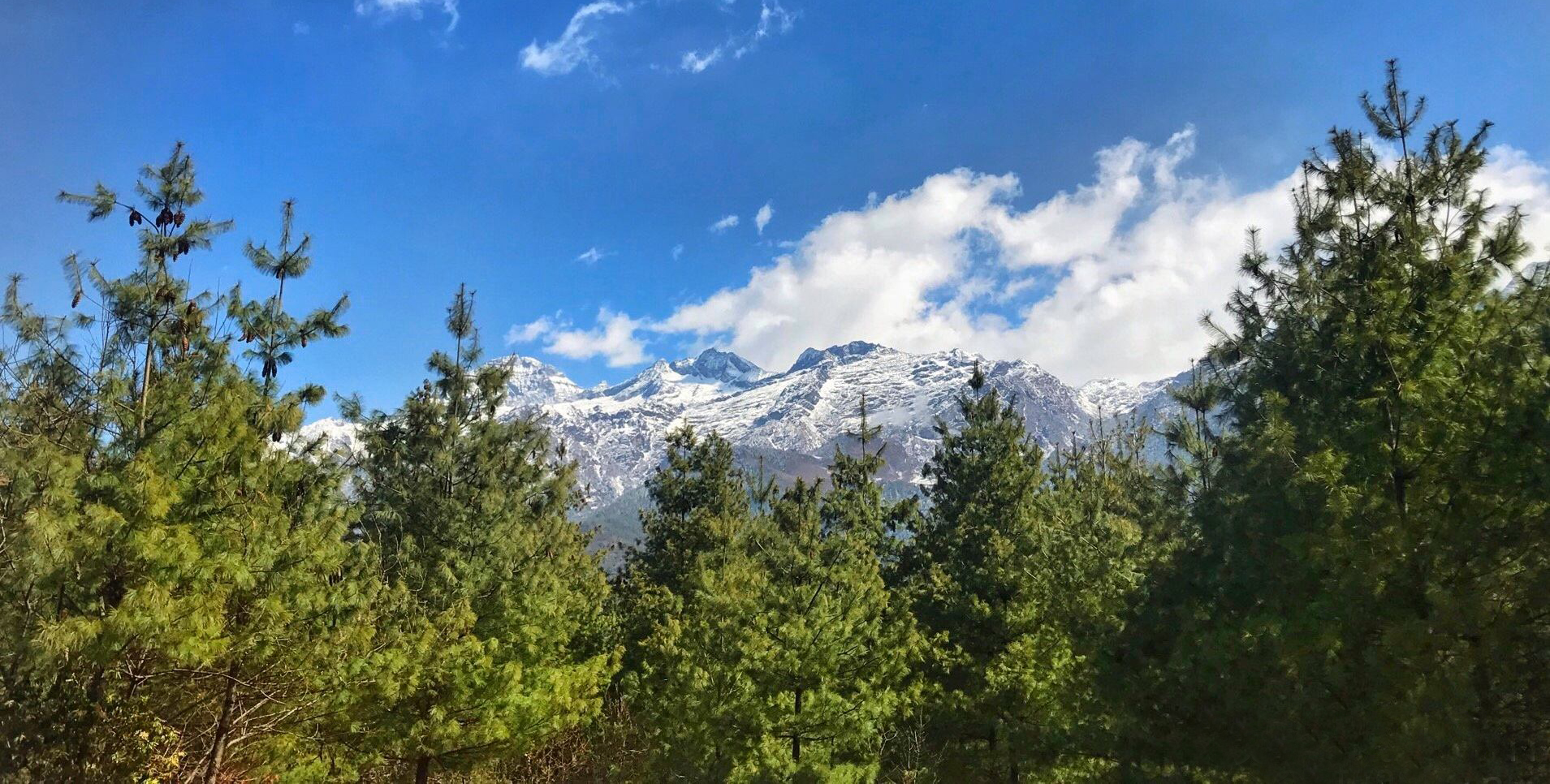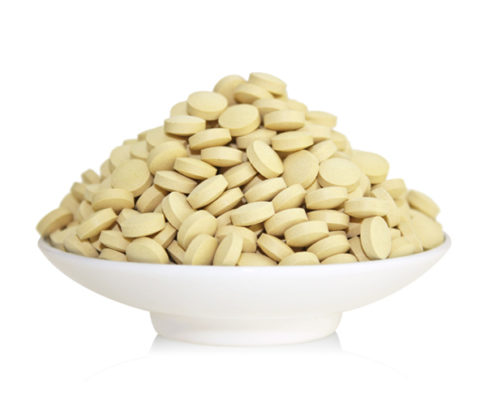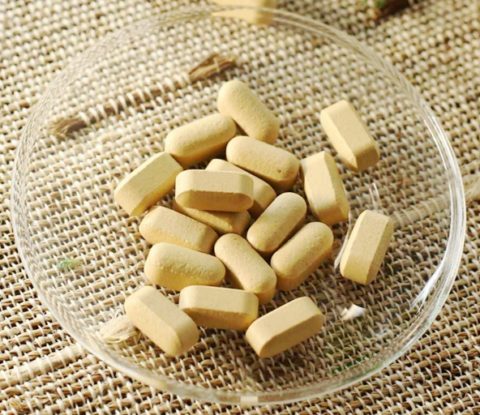
Pine Pollen Powder, Wildcrafted Mason Pine Pollen Powder(Cell Wall Cracked Ratio>98%, Protein>10%)
Pine pollen powder has been used extensively in Asia traditionally because of its outstanding adaptogenic property and also is the most potent plant source of testosterone ever know in modern research.
Pine Pollen Powder,Cell Wall Cracked Pine Pollen Powder
【Plant Source】: Pinus massoniana
【Specification】: Cell wall cracked ratio>98%,protein>10%,250 mesh
【Appearance】: Light yellow fine powder
【Packing】: 1 kg, 2 kg, 5 kg/bag (packed in carton box outside, double-layer PE bags inside);or 25 kg/fiber drum with double layers of PE bags inside.
【Shelf Life】: 2 years since the manufacturing date
【Physical and chemical index】:
Heavy Metal <10 ppm(As <1 ppm, Pb <2 ppm, Hg <0.1 ppm, Cd<1ppm)
Pesticides Residues <1 ppm
Total Plate Count <1000 cfu/g (Yeast & Mould <100 cfu/g, Salmonella: Negative, E.Coli: Negative).
【Brief】: Pine pollen powder is a traditional Chinese medicine in China. It is the dried pollen of Pinus massoniana Lamb, Pinus tabuli formis Carr, or several other plants in the same genus in the pine family. When spring flowers first bloom, pick the flower spikes, dry them in the sun, collect pollen, and remove impurities. The dried pine pollen is a light yellow fine powder. Its particles are very light in weight, easy to fly in the air, have a smooth feeling when twisted, and have a slight smell of pine trees. Compared with bee pollen, pine pollen is artificially collected and has the characteristics of a single flower source, pure quality, stable composition, no pesticide residues, and no animal hormones. Compared to other plant pollen, pine pollen has a better taste and a faint pine tree aroma can be felt when consumed.
【Distribution】: It is mainly collected and processed in Yunnan province, Zhejiang province, Liaoning province, and Jilin province in China.
【Indications in TCM】: Warm in nature and sweet in taste,act on the liver and spleem Channel. It has the effects of drying dampness and astringent hemostasis. Convergent hemostatic drugs classified under hemostatic drugs and it is classified as astringent hemostatic drugs under hemostatic drugs.
Pine Pollen Powder Background Information
As the spermatid of pine stamens, it is the source of life and is responsible for the reproduction of pine trees. There is an air sac on both sides of the olive-shaped cells. During each spring time through the whole April, the air sac inflates automatically and drifts with the wind. Local farmers will pick up the pine panicles when they turn from green to yellow. Pine pollen is rich in various nutrients and active substances. Just as pollen falls on the stamens of plants can make a qualitative leap in the life process of plants, pine pollen has a high health value for human body, too.
Nature has created the miracle of pine trees with evergreen and immortal life for thousands of years and the source of life is its pollen as the sperm cell of pine trees. Pine pollen has been used as both medicine and food for more than a thousand of years in China with many advantages. Pine pollen has the characteristics of single pollen source, pure quality, stable composition, no pesticide residues, no animal hormones and so on. Meanwhile, it tastes better than any other plant pollen with a light fragrance of pine seed. All abovementioned features make it be crowned as “King of Pollen”.
Distribution in China
Pine pollen powder is selected from the scientific refined pollen of Pinus massoniana and Pinus tabulaeformis which are endemic species growing in China. Pinus Massoniana Lamb is a unique indigenous species of pine tree in China, which enjoys an exceptional advantage in terms of resource availability. The areas in which it mostly grows range from Huai River and Tsinling Mountains in the north, to southern parts of Guangdong and Guangxi provinces in the south, southeast coastline and Taiwan in the east, and central parts of Guizhou and Sichuan provinces in the west, covering 17 provinces.
It can be found in more than a half part of China, with the total resource exceeding 20,000,000 hectares. Pinus Massoniana Lamb blooms around mid-April every year. Each male cone produces about 157 , 600 pollen particles. Each panicle produces 0.61g pollen on average,each square meter of tree crown 90.68g , and each hectare of plantation 755.7kg. Therefore, it is estimated that the annual yield of pollen from it alone could exceed 1 , 500,000 tons in China.
Applications in China
Firstly recorded in the Tang Dynasty’s New Materia Medica, pine pollen powder is bright yellow or light yellow fine powder. It tastes sweet with some bitterness and is non-toxic. It has been as the raw material of traditional Chinese food for thousands of years such as in pine cake, pine dumplings and pine wine. Its medicinal value in ancient China mainly relates to skin-related diseases due to its curative effect, and it has been included in the Chinese Pharmacopoeia 2000 edition.
Composition
Rich in dietary fibers(lignin, cellulose, hemicellulose, etc), pine pollen powder also contains protein, amino acids (more than 20 kinds of amino acids, including eight essential amino acids for human body), fat, sugar, minerals (such as potassium, calcium, magnesium, phosphorus, sulfur, chlorine), and trace elements such as silicon, strontium, manganese, iron and selenium. It also contains organic acids, nucleic acids, and vitamins, including vitamins. Vitamin C, E, etc. The fatty acids in pine pollen include linoleic acid, oleic acid, palmitic acid, alpha-linolenic acid and other unsaturated fatty acids.
Pine pollen contains a variety of flavonoids which have anti-inflammatory, anti-oxidation, anti-virus, anti-allergy, anti-atherosclerosis, cholesterol reduction, anti-radiation, anti-tumor, vasodilation and inhibition of lipid peroxidation. It also contains polysaccharides, hormones, choline, enzymes and other bioactive enzymes such as CAT, SOD which have the effects of scavenging free radicals in vivo, restoring fatigue and delaying aging. In total, there are more than 200 kinds of substances with special effects that can work on human physiological functions.
Pine Pollen Powder as an Adaptogenic Herb
In April each year, pine trees produce a magical adaptive powder from the male panicles on each branch. And this yellow powder is pine pollen, which is very beneficial to human nutritional supplements. Pine pollen powder has been used as a nourishing food and medicine with a long history, especially in Asian countries such as China, Japan and South Korea. And pine pollen is regarded as an adaptogenic herb, referring to those herbs that can cater to exactly what human body needs and correspondingly cure the distress of different parts of the body. As an adaptogenic herb, pine pollen powder can work on the human body with no toxic side effects for a period of time.
Pine pollen powder is rich in protein, amino acids, phytosterols, vitamins, trace elements, minerals and other nutrients. Nutrients carried include vitamin A, vitamin B (folic acid), B1, B2, B3, B6, vitamin D, vitamin E, calcium, copper, iron, manganese, magnesium, molybdenum, phosphorus, potassium, selenium, silicon, sodium, zinc and more than 20 amino acids including 8 essential amino acids.
As we all know, amino acids are the basis of our body’s production of protein, which is a great demand in the daily functioning of our body. Pine pollen powder is rich in complete nutrition, most importantly, we can take it for a long time without side effects. Pine pollen powder can potentially promote the immunity & endocrine system, decrease sensitivity to pain, lower cholesterol, stimulate organ regeneration as an anti-inflammatory, anti-arthritic and anti-tumor agent. All above benefits make it an effective supplement to strengthen physical function to prevent degenerative condition of our body.
Pine Pollen Powder as an Androgen Supplement
Pine pollen powder has another important advantage, that is, it is an androgen that can balance testosterone levels, just as we did in our 20s. More importantly, this source of testosterone is natural. Pine pollen powder can increase the level of testosterone in the blood and balance the ratio of androgen to estrogen. Because it is male sperm that germinated from pine trees, it contains phytosterols, which initially contribute to the growth of trees. The hormone and adaptive benefits of pine pollen powder contribute to prostate health, such as benign prostatic hyperplasia and benign prostatic hyperplasia (BPH), and have the potential to prevent breast cancer and prostate cancer and inhibit the growth and proliferation of cancer cells.
Some people may mistakenly believe that only men need pine pollen, while women do not, because pine pollen contains androgens. This view is wrong because pine pollen powder contains phenylalanine, which is related to neurotransmitters in the brain. Phenylalanine contributes to the growth of dopamine which is a precursor of levodopa. Levodopa has been studied in a number of experiments, and the results show that it can help women to produce orgasm. In addition, pine pollen powder also contains arginine, which can effectively promote male and female reproduction and hormone release. Women may also lack testosterone, which may lead to lack of sexual desire, fatigue, depression, sleep disorders, poor sleep quality and other problems. Therefore, we can see that the balance of female testosterone level is also very important.
This is clearly important when women enter menopause. Because during this period, women’s testosterone will decline severely, which will lead to a decline in their sexual desire and frequent emotional changes. These are the symptoms we often mention in the “midlife crisis”. Pine pollen powder is a suitable supplement to help women improve menopausal symptoms and bring them a more comfortable experience. In addition, arginine in pine pollen can help solve different skin problems, so we can also use pine pollen externally to improve different skin conditions, such as wounds, eczema, acne, pustules and diaper rash.
Throughout April, we collect raw pine pollen from two sites each year, one in the Qiandao Lake area of Zhejiang Province and the other in Yunnan Province in southwestern China.
The Qiandao Lake/Thousand Island Lakes area
It is located in Chun’an County, Zhejiang Province, east of China. More than 90% of these areas are forests and Pinus massoniana is widely distributed. It is a national water resources protection area with excellent environmental conditions, and also a national 5A scenic spot.

Pine Pollen Powder:Thousand Island Lakes
Locals in Chun’an County have long been accustomed to picking and taking pine pollen powder, but it is only a primary raw food additive. According to the research of pine pollen conducted by the Chinese Academy of Forestry, a small number of farmers in Jinfeng and Wangzhai towns began collecting the pine pollen in 1984. Even now, the two towns are still the main collectors of pine pollen powder. In recent years, more villages and towns in Chun’an County have joined the pine flower harvesting team, such as the villages of Songcun, Zuokou, Wutong and Jiangjia, Linqi and so on.
The geographical position of Chun’an County is at the northeast of the subtropical zone, located at 29 degrees north latitude and 119 east longitude. And the annual average temperature is 17 degrees Celsius, the daily maximum temperature is about 39 degrees Celsius, the daily minimum temperature is about minus 5.4 degrees Celsius, the annual precipitation is about 1430mm, and the annual sunshine is about 1951 hours. The terrain is dominated by low and middle mountains, forming a distinct vertical climate layer.
Due to the special microclimate formed by the water body effect of Qiandao Lake/Thousand Island Lakes, compared with other regions at the same latitude, it is warm in winter and cool in summer. This climatic condition is favorable for the growth, development, flowering and fruiting of Pinus massoniana, and is suitable for the production of pine pollen powder.
The area covers a wide amount of mountain red soil developed by gravel rock, which is suitable for the growth of Pinus massoniana. Pinus massoniana can blossom and bear fruit at the age of 2-3, but it takes 5-7 years to enter the normal blooming period. The pine pollen panicles gradually mature in early and mid April each year. This period lasts about 15 days, during which most of the harvest takes place. If it rains a lot during the flowering season, the harvest time may be shorter. On average, a farmer can harvest 2.5 to 5 kilograms of pine pollen powder a day. The forest area of Pinus massoniana in the Qiandao Lake/Thousands Island Lakes area is about 906,666 hectares, and annual output of pine pollen powder can reach to about 1,000 tons.
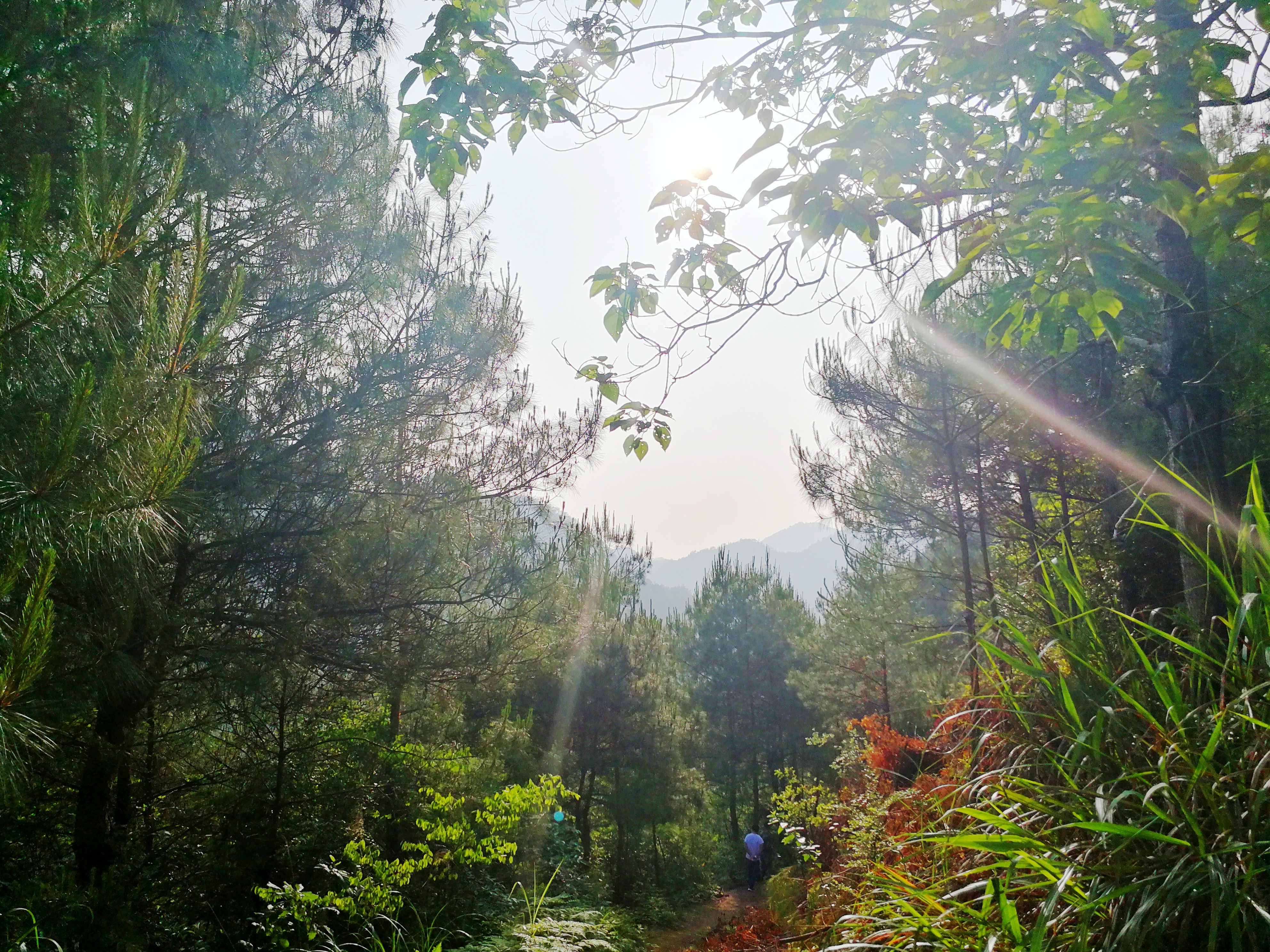
Pine Pollen Harvest Site in Jinfeng Town, Chun’an County
Yunnan Province Belongs to Himalayas Region
Yunnan Province in Southwest China covers an area of about 152,000.00 square miles. Many pine trees grow in these mountains and river valleys. This part of Yunnan belongs to the Tibet Autonomous Region and is the foot of the eastern Himalayas. Yunnan Province has a high forest coverage and is the province with the most abundant vegetation in China. Yunnan has become the preferred destination for many naturalists in Europe and America because of its beautiful natural scenery and various animal and plant species. At the same time, its geographical isolation and geographical characteristics ensure that the forest where we collect pine pollen is not be polluted by industry.
Main Features of Our Pine Pollen Powder
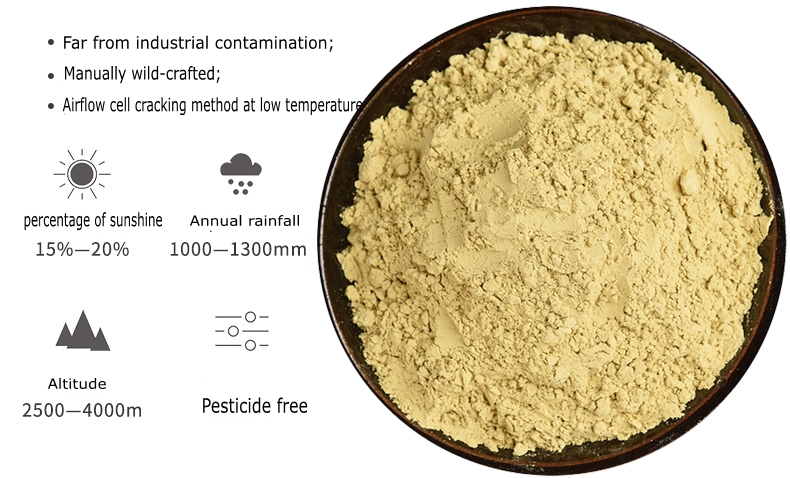 • 100% Natural with no Contamination
• 100% Natural with no Contamination
Pine pollen powder comes from Pinus massoniana, which is a native tree species growing in mountainous areas with an altitude of 1100-1500 meters. Meanwhile, compared with bee pollen, pine pollen is collected manually. Therefore, these factors make it have the characteristics of single source, pure quality, stable composition, no pesticide residues, no animal hormones and so on.
• Contains More than 200 Kinds Nutrition Substances
Pine pollen powder, as the sperm cell of pine tree, is the reproductive source of pine tree growth. The Trace Element Research Institute of Beijing 301 Hospital and Munich University of Technology (the most famous trace element research center in Europe) conducted the most scientific tests on all the nutritional components of pine pollen and found that pine pollen contains all the nutritional components necessary for human longevity.
And these nutrients include a variety of proteins, amino acids, minerals, acids and plum, nucleic acid, flavonoids, monosaccharides, polysaccharides and so on. Their total amount is more than 200 kinds, and the collocation is quite reasonable, which can comprehensively supplement and balance the nutrition needed by the human body. So far, pine pollen powder is considered to be the most natural, diverse, complete and reasonably configured nutrition and health care product in the world.
• Above 99% absorptivity
Pine tree is one of the longest-lived tree species in the world. Its pollen contains genetic information and all nutrients for life, and these nutrients are all active. Through the Low Temperature Airflow Cracking Technology, the cell wall cracking rate of pine pollen can reach up to 99.6%. The active nutrients of pine pollen can be released completely and the pollen particle diameter is only 5 micrometers(μm) which is smaller than human cells’ as 7 micrometers(μm). This can ensure the pine pollen to be absorbed easily by human cells after enter the digestive system and help to transport the nutrition to other parts of human body in a short time.
Collection Time of Pine Pollen in China
Flowering dates of Pinus massoniana and Pinus tabulaeformis in China are postponed from south to north, Yunnan province in March, Henan province in mid-April, and Northeast districts in June. Flowering period in the same area could be also delayed with the increase of altitude. For example, the flowering period will be 7-10 days later for altitude above 1000 meters than that in altitude at 500 meters above sea level.
Moreover, the flowering time of different years in the same place may differ by about 10 days due to the influence of precipitation, temperature and other factors. In a region, the collecting time of pine pollen powder generally lasts only 10-15 days. Therefore, it’s very important to observe the growth of male cone panicles in order to determine the suitable collection time of pine pollen powder. The best picking time is when the small grains on most panicles changes their color from green to yellow.
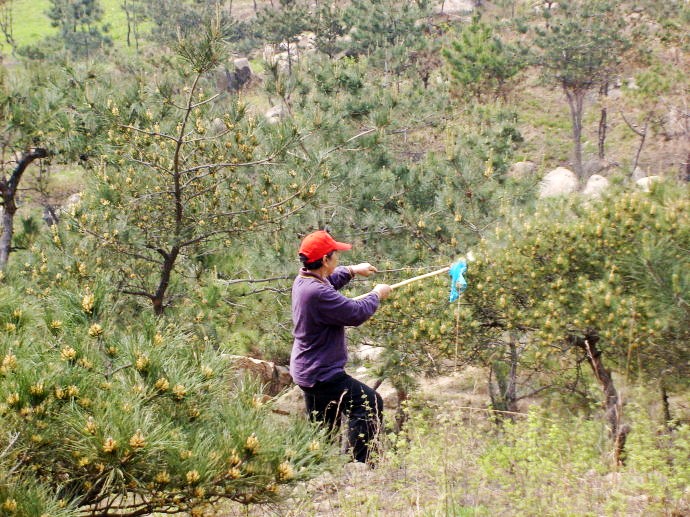
Farmers Collect the Pine Panicles
Selection of Pine Pollen Panicles
1. Mature panicles are slightly yellow in color; The pollen grains are slightly loose, almost without serosity, and yellow pollen can be scattered when twisted by fingers. Panicles in this state are most suitable for picking, and the yield can reach about 8-9%.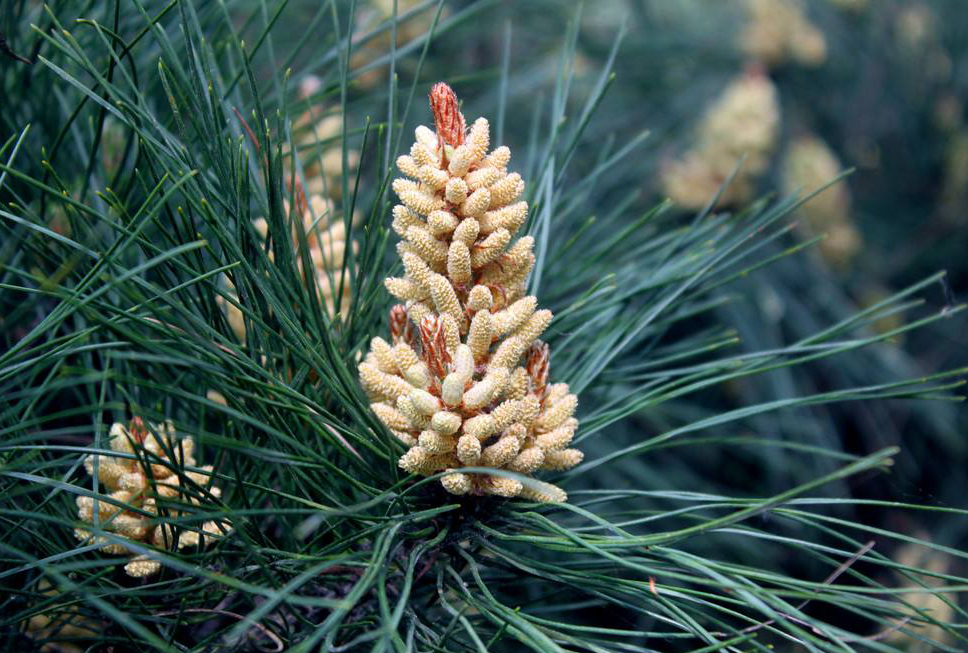 2. The color of immature panicles is green; The grains are hard, there is a large amount of slurry when twisting with fingers, and little pollen is produced after drying. This state of panicle is not easy to dry and mildew easily.
2. The color of immature panicles is green; The grains are hard, there is a large amount of slurry when twisting with fingers, and little pollen is produced after drying. This state of panicle is not easy to dry and mildew easily.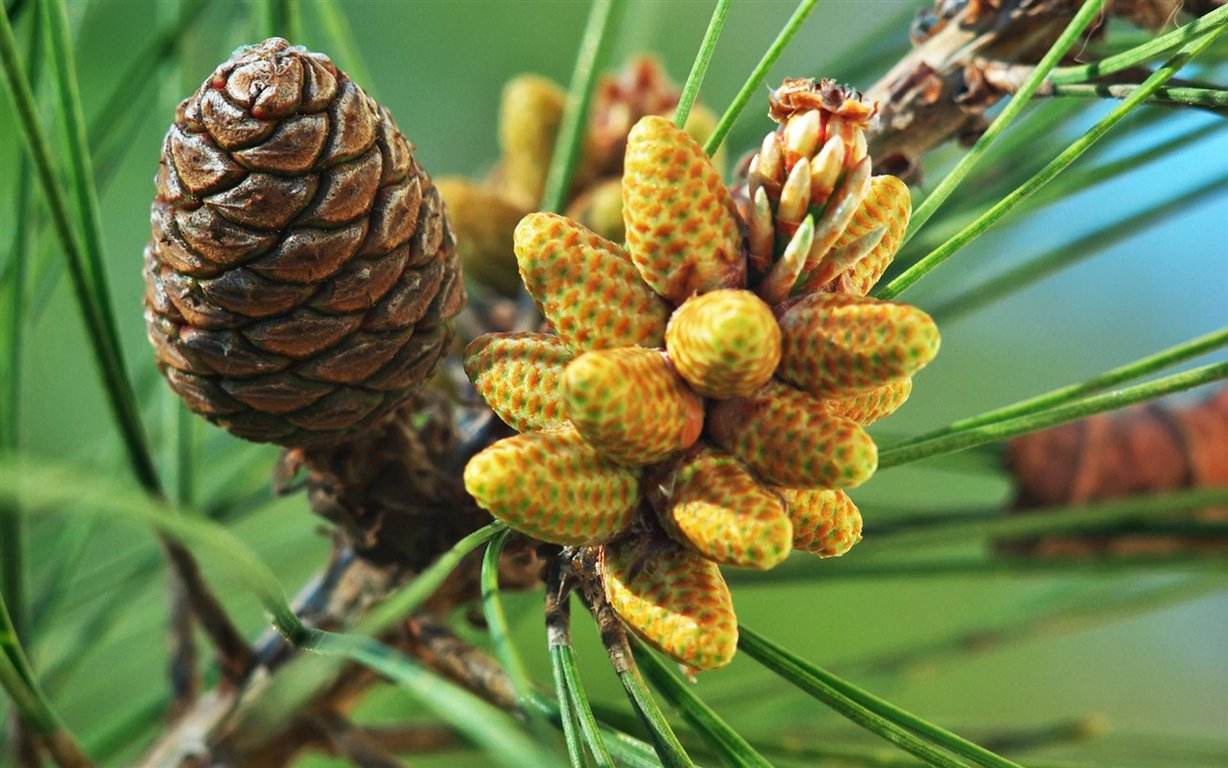 3. Over ripe panicles are yellowish white; At harvest, the grains are loose, the pollen is easy to scatter, and the pollen yield is very low.
3. Over ripe panicles are yellowish white; At harvest, the grains are loose, the pollen is easy to scatter, and the pollen yield is very low. 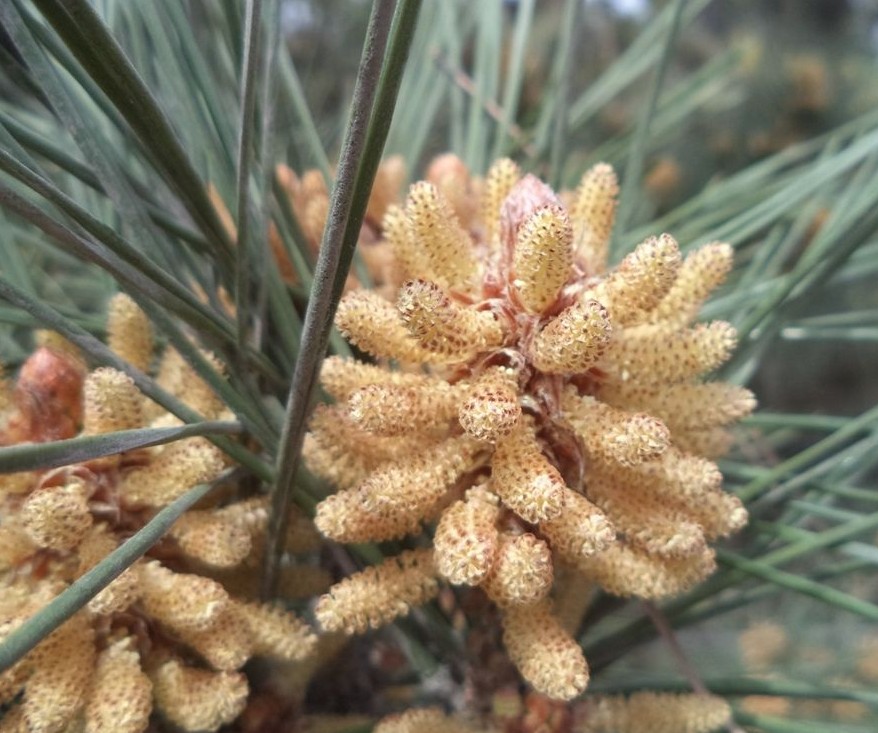 4.The withered panicle is dark brown, almost without pollen; Therefore, there is no collection value.
4.The withered panicle is dark brown, almost without pollen; Therefore, there is no collection value.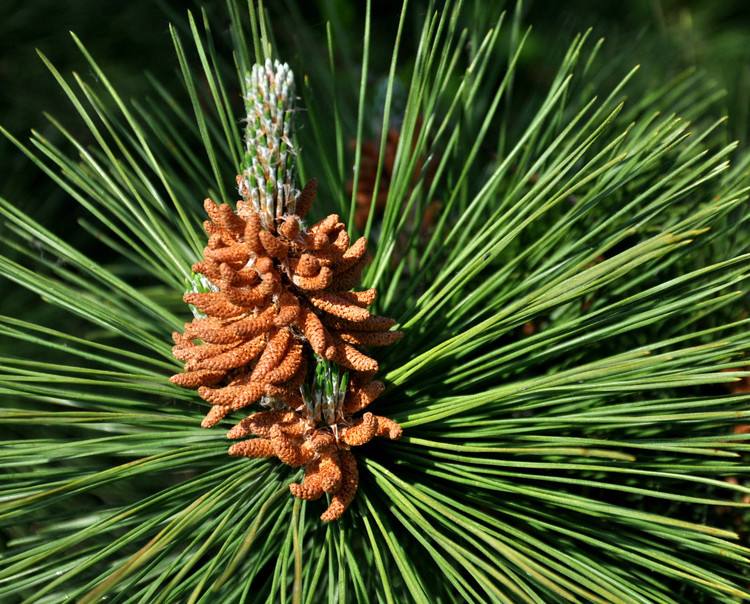
Preliminary Processing of Raw Pine Pollen
1. Natural Air-drying
As the raw material of health products and health food; the threshing ground of pine panicles shall be clean and dry. The panicles of pine trees are naturally dry in the air, and about 15-20 kg of panicles can be dried in a 1 square meter site. The harvested panicles are evenly spread on the plastic film. The recommended thickness for air drying is 10-20 cm, otherwise it is easy to mold. Under the conditions of sufficient light, natural ventilation and dehumidification, pine pollen can be scattered from the Panicle in about three days.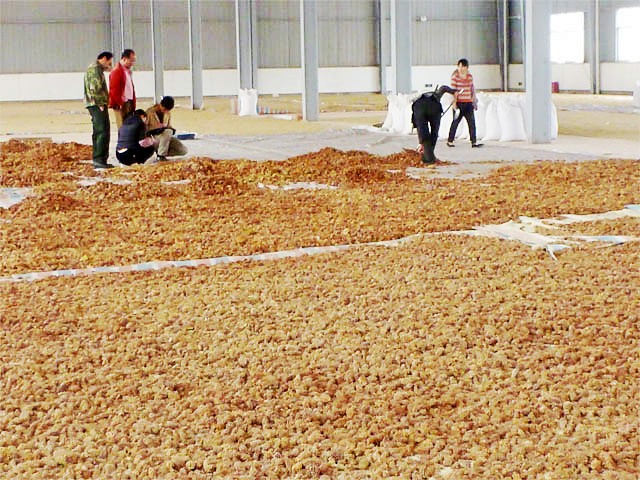 2. Rough sieving
2. Rough sieving
Scattered pollen shall be screened by 60-80 mesh vibrating screen to remove panicles, pine needles and other impurities.
3. Pine pollen dehumidification
Pine pollen powder contains 15-25% water, which is easy to mold and acidify; Therefore, timely dehumidification is required. Lay the coarse pine pollen on the plastic film of the greenhouse, with a stacking thickness of no more than 5cm, where it can receive sunlight, and stir regularly to remove moisture.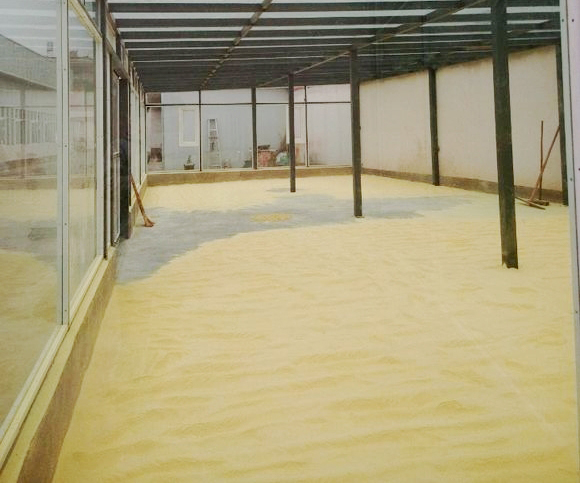 4. Scientific Storage
4. Scientific Storage
Raw pine pollen powder is packed into 25kg each in double-layer food grade non-toxic polyethylene plastic bags, with the bag mouth tightened, and temporarily stored in a cool and dry warehouse. Raw pine pollen will be processed into cell cracked pine pollen powder per order. 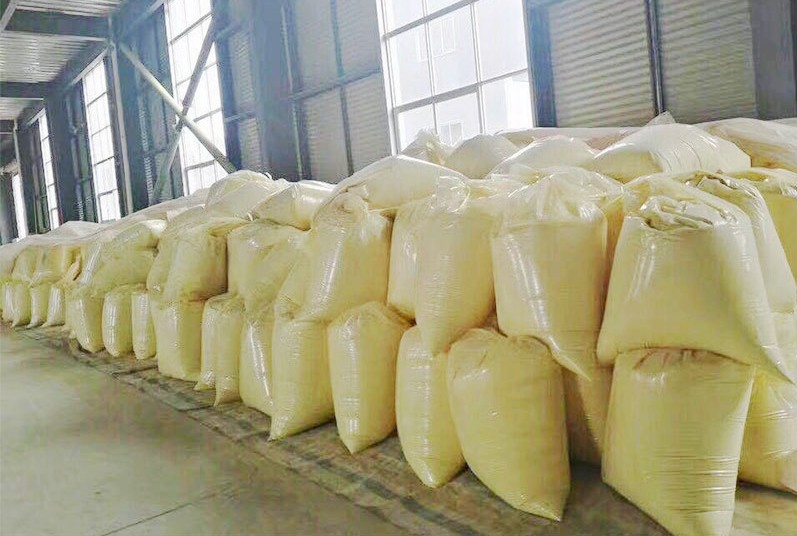
Manufacturing Process
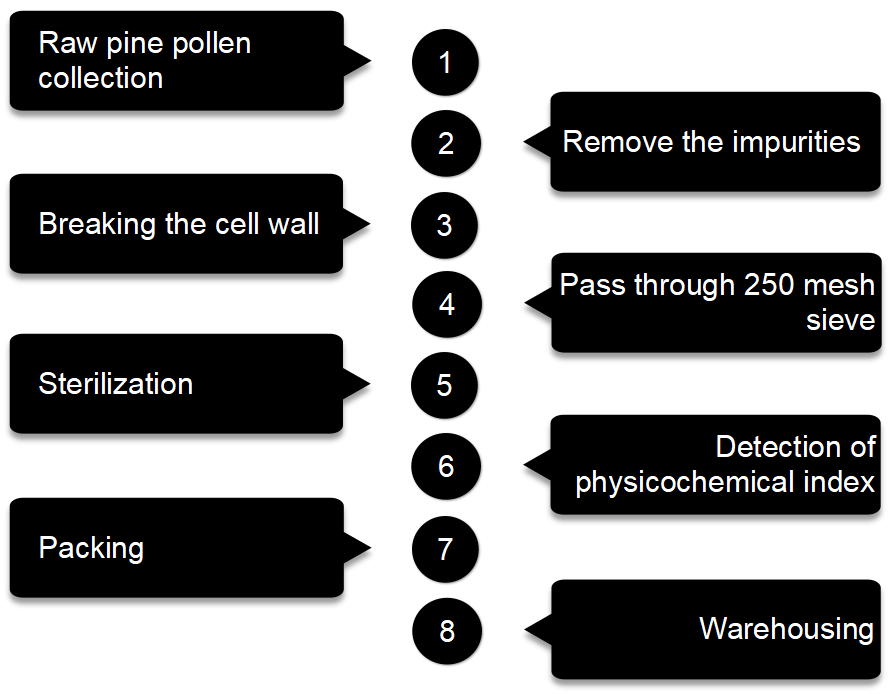
1. Raw pine pollen powder harvest- In April each year, farmers manually pick ripe pine pollen panicles from pine trees.
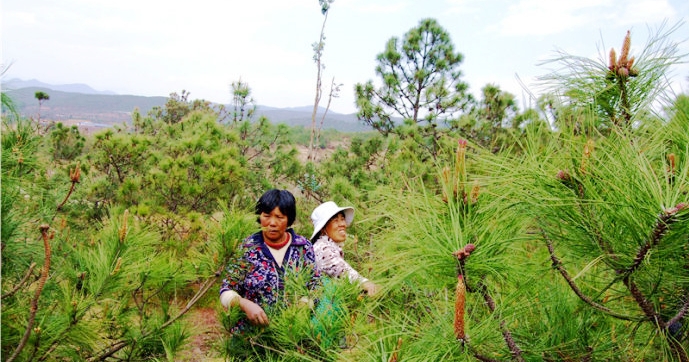
Raw Pine Pollen Harvest in Qian Dao Lake site

Air-drying the Pine Pollen Panicles
2. Removal of impurities- The workshop adopts air separation technology to remove sand, dust, spore bud and other impurities in pine pollen powder. The working principle of air separation is that goods of different weights fall at different distances.
3. Breaking the cell wall by Airflow Cell Wall Cracking Machine or Vibrating Cell Wall Cracking Machine.
The air flow cell wall crusher is composed of an air supply unit, a feeding unit, a grinding unit, a powder grading unit and a powder collection unit. When raw pine pollen is mixed with fresh compressed air from the feed port, the supersonic air flow generated by the ejector will cause the pine pollen particles to collide with each other. The cell wall of pine pollen was destroyed and broken in this process. After the pine pollen particles reach the required fineness, they will be released by the grading device at the top of the machine and collected by the powder collection device at the bottom of the machine.
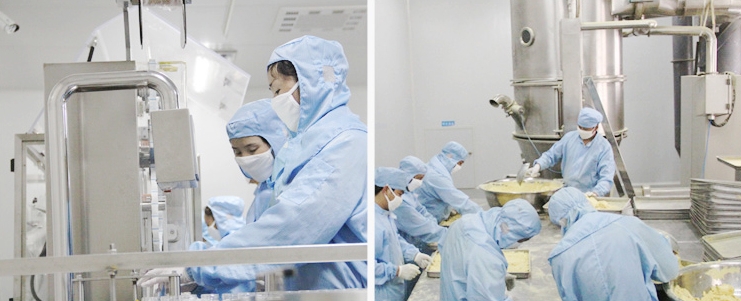
Pine Pollen Powder Cell Wall Cracking
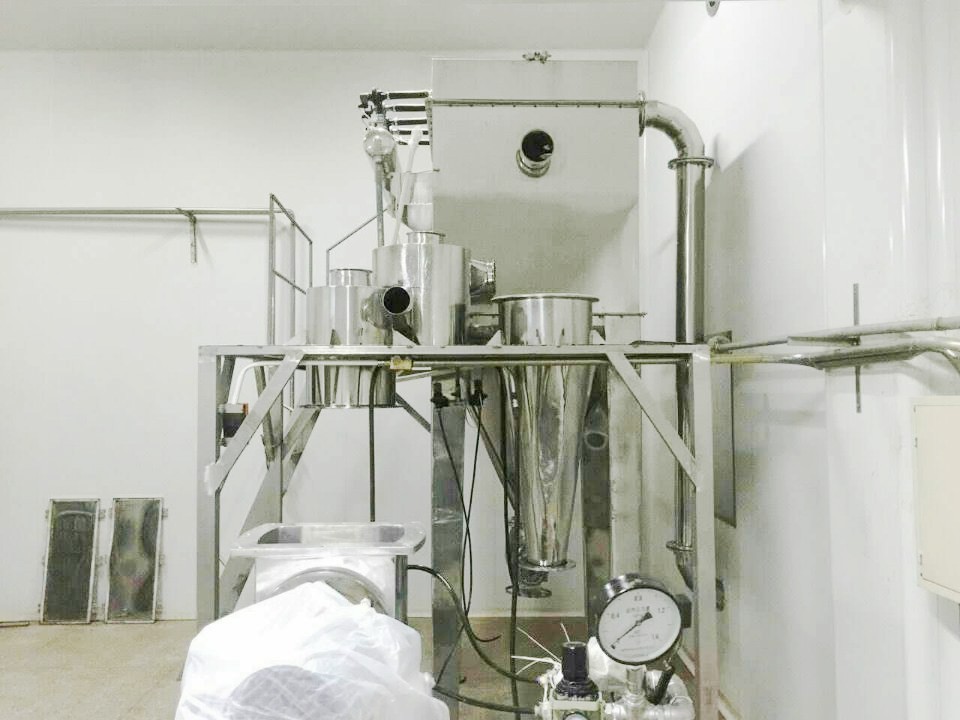
Low Temperature Airflow Cell Wall Cracker
Vibrating Cell Wall Cracking Machine-The raw pine pollen powder is sent to the crushing room through the hopper. Under the action of vibration, the grinding rod in the cavity began to work continuously to break the cell wall of pine pollen. The machine operates under completely enclosed conditions to ensure no dust and environmental pollution.
4. Passed through 250 mesh vibrating screen- Workers put the cell cracked pine pollen powder into 250 mesh size vibrating screen to ensure the particle size of final pine pollen is 95% pass 250 mesh sieve.
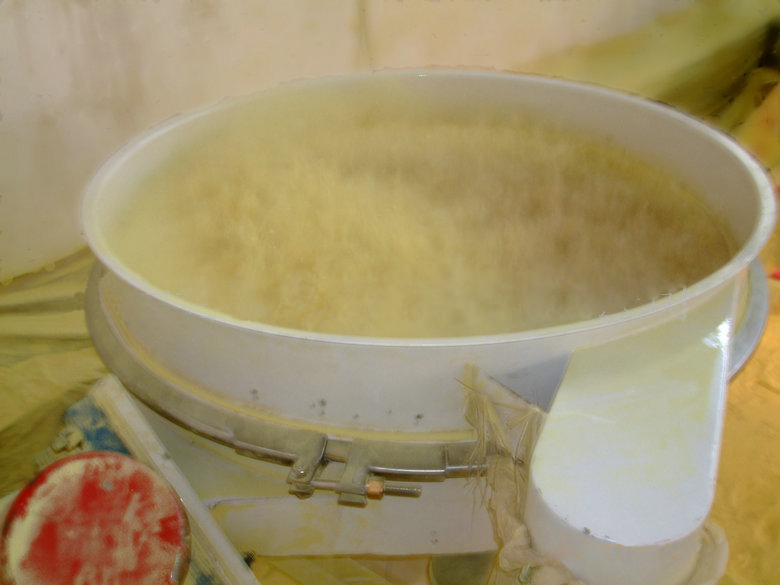
Pine Pollen Powder Passed Through 250 Mesh Vibrating Screen
5. Sterilization by Microwave sterilizer or High Temperature & High Pressure in short time (5-10 seconds)
Microwave sterilizer can prevent the active ingredients in pine pollen from losing their biological activity at high temperature, because some active ingredients in pine pollen will lose their biological activity above 40 degrees Celsius. Compared with microwave sterilization, high temperature and high pressure for a short time (5-10 seconds) can avoid microwave contact, but may lead to loss of some nutrients.
6. Test on its physical and chemical index
The laboratory tests the heavy metal content and the total plate count to ensure that the final pine pollen powder meets the data specified in the pharmacopoeia and Certificate of Analysis.
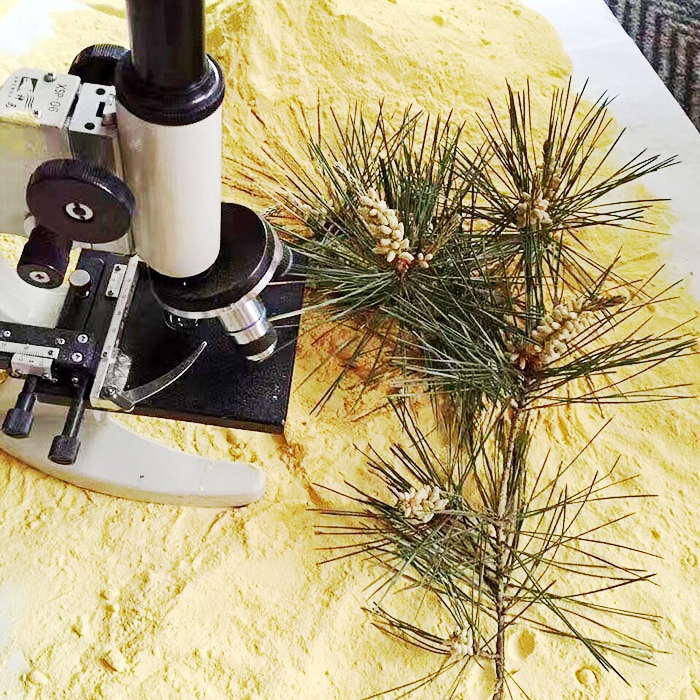
7. Packing&Warehousing
The workers put the finished pine pollen powder into a 25kg / fiber barrel (with a diameter of 41cm, a height of 50cm, and a double-layer food grade polyethylene bag inside) and stored it in a cool and dry warehouse to avoid direct sunlight and high temperature.
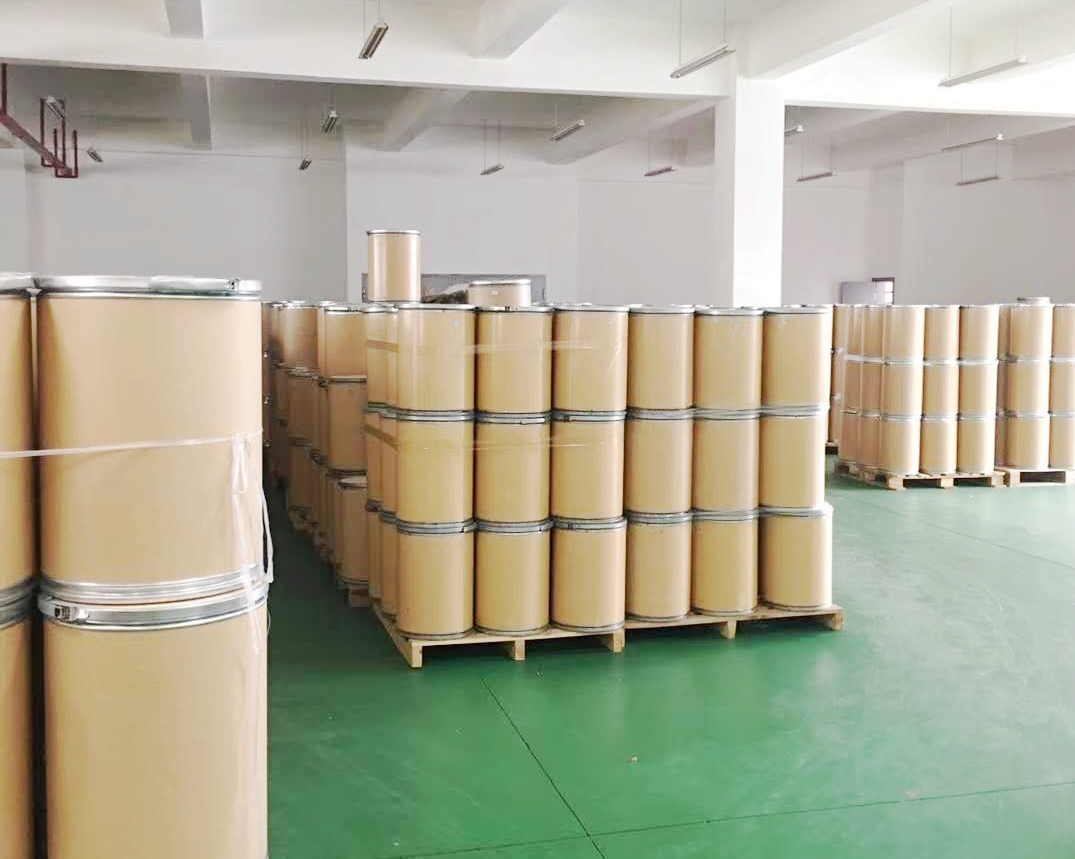
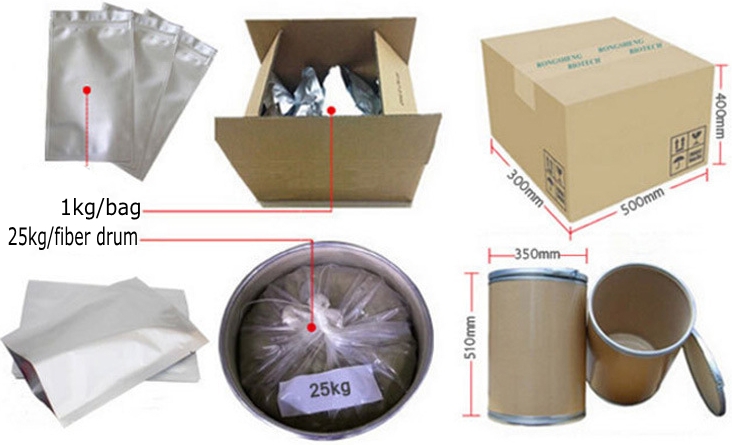
Why the Cell Wall of Pine Pollen Powder Need to be Cracked?
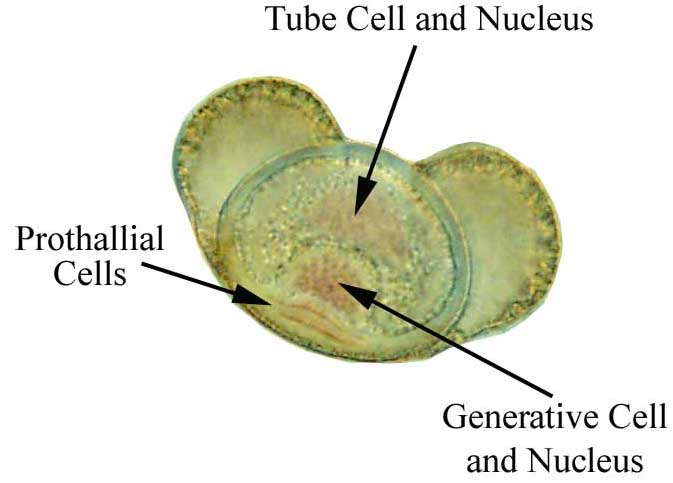
Pine pollen powder has a hard cell wall, like armor, to protect internal nutrients. When we immerse it in caustic sodium or boiling water, the cell wall of pine pollen powder can remain unchanged. A Japanese scholar experimented with pine pollen powder by increasing the radiation dose and found that the cytoplasmic dead volume was 77.4-129 C / KG, while the human body lethal dose was only 0.15 C / KG. Experiments have shown that the pine pollen cell wall has very strong stability and anti-radioactivity, the digestive juice of the human body or any monogastric animal cannot break the pine pollen cell wall. Therefore, it is necessary to break the cell wall in order to better absorb the internal nutrients..
Comparison of the Appearance of Cell Cracked and Cell Un-cracked Pine Pollen Powder
However, European and American scholars believe that pollen can be absorbed by the human body whether there is a cell wall or not. Over the years, no agreement has been reached on this issue. This subject has attracted the attention of many nutritionists, and many studies have been carried out on it.
Many changes have taken place in the appearance and some physical properties of pine pollen in the process of wall breaking. The color changes to light yellow. Under the microscope, they found that the air sac structure was separated from the main structure of pine pollen, and the pine pollen was not as complete as before. This will cause the pine pollen to lose its fluidity. On the contrary, the cell cracked pine pollen powder is sticky and difficult to lift in the air..
Fig.1: Cell wall un-cracked pine pollen Fig. 2: Cell wall cracked pine pollen powder
Color: Golden yellow Color: Light yellow
Particle size: About 80 mesh Particle size: 300 mesh (cell cracked ratio>98%)
Character: Character:
1). Rough particle with obvious granular sensation 1). Finer particle
2). Easier to lift in the air, better fluidity 2). Higher viscosity and lower fluidity
3). Weaker bitterness in taste 3). Stronger bitterness in taste
4). Most floating on the surface of water(Fig.3). 4). Most suspending or dissolving in water(Fig.3)
Composition Change after Cracking the Cell Wall
Compared with raw pine pollen and cell wall cracked pine pollen powder, the dry substance content is almost no difference, which can be concluded that the water change after cell wall cracking is small. As shown in the figure below, we found that the hemicellulose content dropped sharply from 12.8% to 1.5%, the cellulose content dropped sharply from 14.4% to 9.9%, the xylogen decreased from 29.6% to 25.9%, and the coarse fiber decreased from 35.6% to 27.3%, and sugar dropped from 12.3% to 10%. It can be seen from the above figure that the pollen grain airbag is mainly composed of hemicellulose, cellulose, xylan, etc.
| Item | Raw Pine Pollen | Cell Cracked Pine Pollen Powder |
| dry substance | 94.70% | 94.10% |
| coarse protein | 12.70% | 13.10% |
| ether extract | 1.50% | 10.50% |
| total lipids | 7.30% | 10% |
| starch | 5.40% | 7% |
| Sugar | 12.30% | 10% |
| Soluble carbohydrate | 14.80% | 30.20% |
| hemicellulose | 12.80% | 1.50% |
| cellulose | 14.40% | 9.90% |
| xylogen | 29.60% | 25.90% |
| coarse fiber | 35.60% | 27.30% |
| Ash | 3.10% | 3.50% |
| total zinc content | 36.6μg/g | 37μg/g |
| soluble zinc content | 0.16μg/g | 0.26μg/g |
| total energy | 21KJ/g | 22.1KJ/g |
The soluble carbohydrate content increased from 14.8% to 30.2% after cell wall cracking of pine pollen, which was twice as high as the previously. The content of ether extract increased sharply from 1.5% to 10.5%, seven times as much as before. Soluble zinc content also increased significantly from 0.16 ug/g to 0.26 ug/g.
Nutrition Changes after Cracking the Cell Wall
The following figure shows the nutritional changes of pine pollen before and after cell wall cracking. We can find that the crude protein content increases from 12.7% to 13.1%, the starch and total fat content increases by about 30%, the starch content increases from 5.4% to 7.0%, the total fat increases from 7.3% to 10.0%, the total energy increases by about 5%, and the ash content increases by 0.4%.
| Type of amino acids | Raw pine pollen powder | Cell cracked pine pollen powder | ||
| Total amino acids(nmol/mg) | Free amino acids(nmol/mg) | Total amino acids(nmol/mg) | Free amino acids(nmol/mg) | |
| aspartic acid | 65.4 | 1.9 | 68.1 | 2.8 |
| threonine | 36.1 | 1.2 | 37.7 | 2.4 |
| serine | 43.5 | 2.4 | 46.8 | 4.2 |
| glutamic acid | 76.4 | 3.6 | 81 | 5.5 |
| proline | 35.5 | 28.8 | 39.4 | 29.5 |
| glycine | 67.5 | 2.5 | 68.8 | 2.2 |
| alanine | 64.9 | 8.7 | 67.3 | 9 |
| cystine | 5.4 | 0.2 | 5 | 0.2 |
| valine | 48.2 | 1.2 | 50 | 1.6 |
| methionine | 1 | 0.1 | 10.2 | / |
| isoleucine | 35.8 | 0.7 | 36.8 | 1 |
| leucine | 57.2 | 0.7 | 59.3 | 0.9 |
| tyrosine | 15.4 | 2.2 | 16.9 | 2.9 |
| phenylalanine | 27.1 | 1 | 27.8 | 1.3 |
| histidine | 16.9 | 12.9 | 19.6 | 13.7 |
| lysine | 50.4 | 0.6 | 53.3 | 1.5 |
| arginine | 36.7 | 9.3 | 35.9 | 11.8 |
Except for cysteine, arginine and methionine, the content of total amino acids in cell wall cracked pine pollen powder was higher than that in raw pollen. In addition to cysteine, glycine and methionine, the content of free amino acids after cell wall cracking was also high. After cell wall cracking, the solubility of water-soluble and fat soluble components increased significantly, which strongly proved the effectiveness of cell wall cracking process.
The above data can support the view that the cell wall cracking process contributes to the full release of pine pollen nutrition. Other techniques for cell wall cracking of pine pollen powder include Fermentation Cell Wall Cracking Method, Colloid Grinding and so on. However, the high-speed airflow crusher can ensure the cell wall cracking rate and greatly improve the absorption rate of pine pollen nutrition by human body.
How to Make a Preliminary Judgment on Pine Pollen Powder Quality?
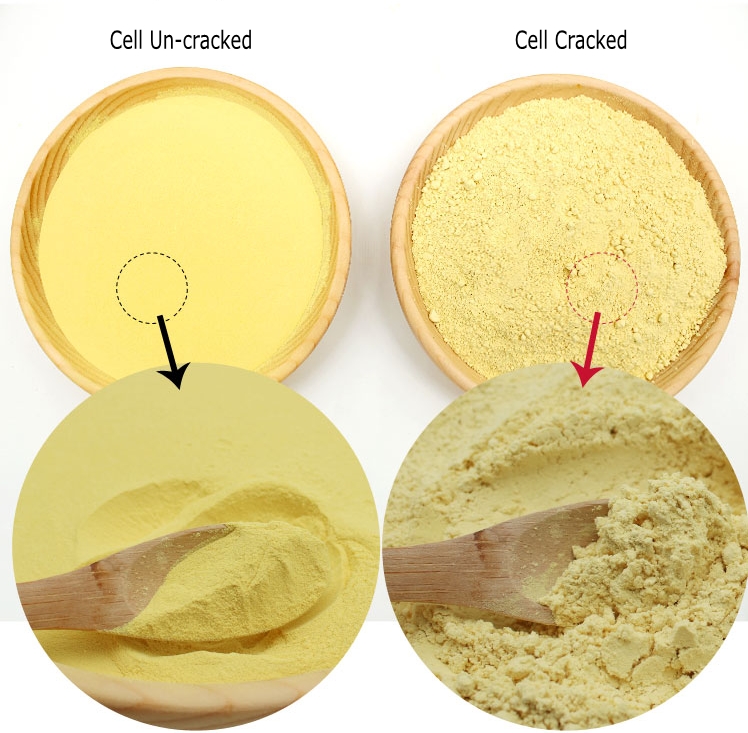
Comparison between Cell Wall Cracked and Un-cracked Pine Pollen Powder
- Visual Judgment: Observe whether the color is normal. High quality pine pollen is usually light yellow. On the contrary, yellowish green or light brown indicates poor quality, which may be caused by mixing unknown or impurities.
- Smell: High quality pine pollen powder should have a strong pine aroma. If there is moldy or moldy smell, it means that the quality of the powder is poor and the freshness is lost.
- Taste: Pine pollen has a bitter taste, and the cell wall cracked pine pollen powder will produce a strong bitter taste. If there is no bitter taste or the feeling of sand in your mouth, it means that pine pollen powder is not pure enough. The addition of sugar or other additives may cause the pine pollen powder to lose its bitter taste, or only have a slight bitter taste, and the taste is like sand because the impurities are not filtered out.
- Test: Take a small amount of pine pollen and rub it on the back of your hand. In this way, you can test whether pine pollen is fine enough to penetrate the skin. High quality pine pollen can be absorbed by the skin, and the touch is fine and smooth. You can also add a small amount of pine pollen to the water to observe its state in the water. Pine pollen powder with cracked cell wall is easy to dissolve and suspend, while pine pollen without cracked cell wall mainly floats on the surface.
Recommended Steps for Taking Pine Pollen Powder
- Put about 5 grams (about one teaspoon) of pine pollen powder in a coffee cup or any cup you like.
- Add water below 40 degrees Celsius to pine pollen powder because some components may lose their biological activity in water above 40 degrees Celsius. You can also add some honey or milk to your taste..
- Mix pine pollen well and drink before it cools off.
Forms of Pine Pollen Products and Their Differences
We have different forms of pine pollen products. For cell wall cracked pine pollen powder, you can use warm water or mix it with drink or food, or you can fill the powder with capsules. You can also choose to carry a convenient pine pollen powder tablet. Or you could choose our pine pollen extract which is 10 times concentrated and could dissolve in water for easier intake. Of course you can also make pine pollen tincture at home with our cell cracked pine pollen powder. As for the choice of pine pollen products, it depends on your own preferences and choices. No matter what type of pine pollen you choose, you can usually get better energy and more focused mental integrity.
Pine pollen powder usually refers to the cell wall cracking type, which helps to better absorb nutrients in cell walls. Pine pollen tablet are made of cell wall cracked pine pollen powder. The most common specifciation is 500 mg per count. Pine pollen extract is a water-soluble powder produced with water as solvent. It has the advantage that the components are more concentrated and can be quickly dissolved in water for easy use. The disadvantage is that some non water soluble components may be lost during extraction.
Recommended Dosage
The dose of pine pollen varies depending on the purpose of use, the forms of product, and individual tolerance and health. And the recommended dosage is:
1/2 to 1 teaspoon pine pollen powder up to 3 times daily for general health preservation purposes.
Take 3 counts for pine pollen tablets, twice daily or as directed.
1/2 to 1 teaspoon pine pollen extract up to 3 times daily for general health preservation purposes.
Different people may respond differently to pine pollen supplements. Some people may need a higher dose to have a significant effect, while others may need a lower dose. In order to reduce the risk of side effects and measure personal tolerance, we recommend that you start using pine pollen at the low end of the recommended dose range. If there are no side effects after one week, the dosage can be increased slowly as required to achieve the desired effect.
Lab Analysis of Pine Pollen Powder
| Name: Cell Cracked Pine Pollen Powder | Origin: Yunnan Province, China |
| Plant Origin: Pinus massoniana Lamb. | Part used: Pollen |
| Production process: Raw material inspection–Drying–Cracking the cell wall –Passing through 250 mesh size screen–Packing–Test on physicochemical index–Sterilization–Warehousing |
|
| Item | Specification | Test method |
| Cell wall cracking ratio | >98% | 160 times under microscope |
| Protein | >10% | GB/T 5009.5 |
| Physicochemical index | ||
| Appearance | Light yellow to yellow fine powder | Visual observation |
| Smell&taste | Characteristic, smell of pine tar | Organoleptic |
| Particle size | 95% pass 250 mesh size | 250 mesh vibrating screen |
| Loss on drying | <9% | GB 5009.3 |
| Ash | <5% | GB 5009.4 |
| Bulk density | 0.3-0.45g/ml | CP2015 |
| Water solubility | Partially soluble in water | 2g soluble in 60 ml water (60 ℃) |
| As | <0.3 mg/kg | GB 5009.11 |
| Pb | <0.5mg/kg | GB 5009.12 |
| Cd | <1.0 mg/kg | GB 5009.15 |
| Hg | <0.1 mg/kg | GB 5009.17 |
| Benzene hexachloride | <0.1 mg/kg | GC |
| DDT | <0.1 mg/kg | GC |
| Pentachloronitrobenzene | <0.1 mg/kg | GC |
| Microbiologic index | ||
| Total Plate Count | <1,000 cfu/g | GB 4789.2 |
| Yeast & Mould | <25 cfu/g | GB 4789.15 |
| Salmonella | Negative | GB 4789.3 |
| E.Coli | Negative | GB 29921 |
| Conclusion | Complies with enterprise standard GH/T 1030, qualified. | |
| Storage | In cool & dry place. Keep away from strong light and heat. | |
| Shelf life | Effective within 2 years after the date of production. | |
| Package | 25kg/cylinder fiber drum(Dia.41*H.50cm), double-layer food grade polyethylene bags inside. | |
| Customized service | customization according to the methods and specifications specified by customers. | |
| Contact | info@tcmadaptogen.com tcmadaptogen@hotmail.com | |
FAQs for Cell Cracked Pine Pollen Powder
Q: Does pine pollen contain any impurities? If yes, how are they been eliminated?
The blooming pine pollen panicles are completely exposed to the air in the wild environment. The dust or sand brought by wind and rain will inevitably adhere to the pine pollen and mix with the pine pollen during the collection process. In addition, pine bark, pine bud, microspore leaf and some sporangia can also be mixed. These impurities can be removed by airflow separation technology. The principle is that because the relative density of pine pollen and impurities is different, the falling distance is also different under the same air flow.
Q: How to evaluate the quality of pine pollen?
First of all, we can evaluate the quality of pine pollen from the appearance. Is the color of pine pollen light yellow or corn yellow. Earthy yellow or other darker pine pollen means that the powder has deteriorated or has been stored for a long time. Secondly, odor can be used as a reference to evaluate the quality of pine pollen. Fresh and high-quality pine pollen powder has the fragrance of pine trees, while musty or other sour taste means poor quality. Taste can also be used as an index to evaluate quality. Chew a certain amount of pine pollen to see if it has a bitter taste or if there are impurities such as sand. It has no bitter taste and contains impurities such as sand, indicating poor quality.
Q: How to identify cell cracked pine pollen from cell uncracked one?
Cell wall cracked pine pollen powder is light yellow powder. It has a silky texture when rubbed with fingers. It is easy to lift in the air and has strong fluidity. However, the cell wall uncracked pine pollen powder has strong adhesion and viscosity and loses fluidity. The complete air bag structure enables the cell uncracked pine pollen powder to float on the water; however, cell cracked pine pollen powder will sink to the bottom or suspend in water because its closed cell/air bag structure has been damaged.
Q: Why does cell wall cracked pine pollen powder need to be stored in a sealed container?
1). Prevent pine pollen from moisture absorption and caking, because pine pollen has strong assembly effect and water absorption after cell wall cracking.
2). Prevent pine pollen from breeding insects, because the rich nutrition is easy to attract some insects to reproduce in a short time after the cell wall cracking.
3). Prevent some nutrients from losing their activity due to oxidation; for example, enzymes, unsaturated fatty acids, and other components are prone to oxidation and loss of activity..
Q: When is the best time to take pine pollen in a day?
According to the long-term observation and statistics of pine pollen users, the recommended best time is before breakfast and one day’s sleep time to ensure the best absorption effect. Some people may feel uncomfortable taking pine pollen before breakfast. It is recommended to take pine pollen after breakfast and then gradually before breakfast.
Q: Are there any precautions to take pine pollen?
1). As pine pollen is a natural nutritional supplement, rather than any synthetic product, it will not play a role in the short term, so it is very important to stick to it.
2). Take pine pollen on an empty stomach, whether before breakfast or before going to bed, it is recommended to take it 30 minutes in advance.
3). The optimum temperature for mixing hot water with pine pollen is 40 ℃, which will not damage the vitamins and active enzymes contained in pine pollen.
4). It is suggested that the best storage condition of pine pollen is a cool and dry place; It is recommended to store in the refrigerator after unpacking.
Q: Is there any limitation on course of treatment to take pine pollen?
Pine pollen contains more than 200 kinds of beneficial nutrients in a balanced proportion. Unlike any synthetic product, most of them are necessary for metabolism, but human beings cannot produce them themselves and need to obtain them from the outside world. Meanwhile, pine pollen is safe for people of different ages. Therefore, it can be a long-term natural nutritional supplement without any restrictions.
Q: Whether external use of pine pollen requires cracking of the cell wall?
Depending on the situation, the application of cosmetics always needs to crack the cell wall to make nutrition have a more direct effect on the skin. However, if pine pollen is used for hemostasis or talc powder, there is no need to break the wall.
Q: Can pine pollen be taken with honey?
The answer is yes, especially when pine pollen is mixed in water. Honey is a good condiment, which can alleviate the bitterness or the unique taste of pine tree to some people. It should be noted that the water temperature is recommended to be lower than 40 ℃, otherwise some of the nutritionwill be destroyed.
Q: Will pine pollen trigger sexual precocity of children?
Because most pollen as plant germ cells contains high levels of sex hormones, some people worry that if children ingest pine pollen, it may lead to precocious puberty. However, some experiments have found that the content of sex hormones in pine pollen is similar to that in milk and other daily foods, and will not lead to precocious puberty in children. Most importantly, pine pollen is different from other bee pollen, because pine pollen is collected manually, so it does not contain animal hormones, which makes pine pollen safer.
Q: Will pine pollen cause any allergic reaction?
There are not many kinds of pollen that cause allergy, and the pollen that causes allergy will act on the human body through the respiratory tract or eyes; This means that if pine pollen is ingested through the esophagus, the probability of allergic reaction is very small. So far, no allergen has been found in pine pollen. However, for the sake of caution, it is recommended that allergic patients start with a small dose and increase the dose if no negative reaction is found.
Q: What are the differences of allergic reaction and healing crisis?
Allergy is a hypersensitive disease of the immune system. Symptoms include red eyes, itching, runny nose, eczema, urticaria, or asthma attacks. An allergic reaction occurs when a person’s immune system reacts to normally harmless substances in the environment. Food allergies and reactions to venom from stinging insects such as wasps and bees are often associated with these severe reactions.
Healing crisis (also known as purification reaction, detoxification reaction and heckheimer reaction) is the body’s attempt to eliminate the pathogenic conditions that may later develop into serious health problems. This is often misunderstood as recurrence. This response of the body occurs during detoxification when it tries to remove toxins faster than it can properly handle them.
Q: What healing crisis may occur during consumption of pine pollen?
In the first few days or one to two weeks after taking pine pollen, some people may have different unpleasant symptoms. They may panic and doubt the quality of pine pollen; However, these symptoms are only a healing crisis. When these symptoms appear, don’t panic, but find out the actual problem. As the body adapts to the new state, the symptoms of the healing crisis may quickly disappear. Here are some possible healing crisis symptoms for reference:
| Diseases | Possible healing crisis |
| High blood pressure | Dizziness may last for a week. |
| Anemia | Light symptom of nosebleed which mostly happens to female. |
| Liver problems | Feel like vomiting; skin itches. |
| Liver cirrhosis | Blood clot or steak may occur in excrement. |
| Kidney problems | Puffiness of face or light feet edema. |
| Diabetes mellitus | Puffiness of hand or feet. |
| Stomach problems | Feel suffocated and fever in the chest; loss of appetite. |
| Gastric ulcer | Feel stuffy or pain in ulcerous part. |
| Gastroptosis | Feel uncomfortable in stomach or feel like vomiting. |
| Intestines problems | Diarrhoea at different levels. |
| Piles | Blood steak may occur in excrement. |
| Acne | Worse off at the beginning, but better off soon. |
| Chronic bronchitis | Symptoms like dried mouth, vomit and dizziness may occur. |
| Lung problems | Phlegm may be increased with a cream yellow color. |
| Nasosinusitis | Nasal mucus may be increased and become thick. |
| Skin allergy | Worse off in the beginning; symptoms may be improved several days later. |
| Neurosis | Even harder to fall asleep and more exciting than before |
| Rheumatalgia | Light pain will occur in affected part but will disappear several days later. |
| Uarthritis | General weakness or ache. |
| High uric acid | Muscular stiffness |
Allergen-Free Statement
Cell cracked pine pollen powder manufactured by TCM Adaptogen Warehouse Limited contains no known allergens:
Pine pollen is collected from Pinus massoniana Lamb., with a light yellow surface, and screened to remove impurities and broken the cell walls by pneumatic cracking method with a particle size of 250 mesh. And our pine pollen has been sterilized by using Microwave drying sterilizer. Your safety is our priority. We make sure that everything we do for you is as pure as possible:
1). Our products are free of ALL common allergens (no wheat, gluten, dairy, casein, soy, peanuts, tree nuts, or eggs).
2). Most of our products are yeast-free as well.
3). We use only all natural ingredients that are non-GMO.
4). We do not add anything artificial to our foods.
5). All of our products are made in a gluten-free and nut-free facility.
6). Our material suppliers are required to complete non-contamination certificates. If contamination in their plant is possible, they are required to follow best practice procedures (i.e. vigorous line cleaning, dust collection) as prevention.
7). For extra assurance, we perform routine tests for gluten, peanuts and casein.
8). All ingredients are stored in separate bins and have their own scoops.
9). Equipment is cleaned thoroughly after product changes.
10). Our Quality Department is dedicated to avoiding the opportunity for cross contamination of allergens. When manufacturing any of these products our Quality team ensures that our specific clean down procedures between product changeovers are implemented. These clean down procedures ensure that lines, equipment and all surfaces that are in contact with product are adequately cleaned down.
11). All our employees understand the severity of food allergies and intolerances, and take all precautions possible to protect our customers.
12). We have implemented a Hazard Analysis Critical Control Point system to support this claim.
Pine Pollen Nutrition Facts Analysis-TCM Adaptogen Warehouse
Pine Pollen Mineral and Heavy Metals Report-TCM Adaptogen Warehouse
Certificate of Analysis for Pine Pollen Powder-TCM Adaptogen Warehouse
